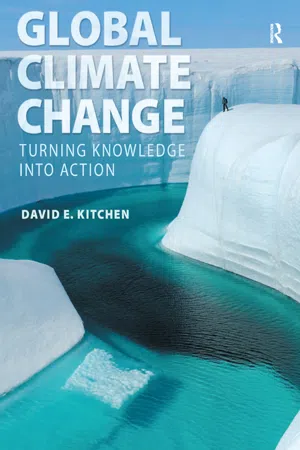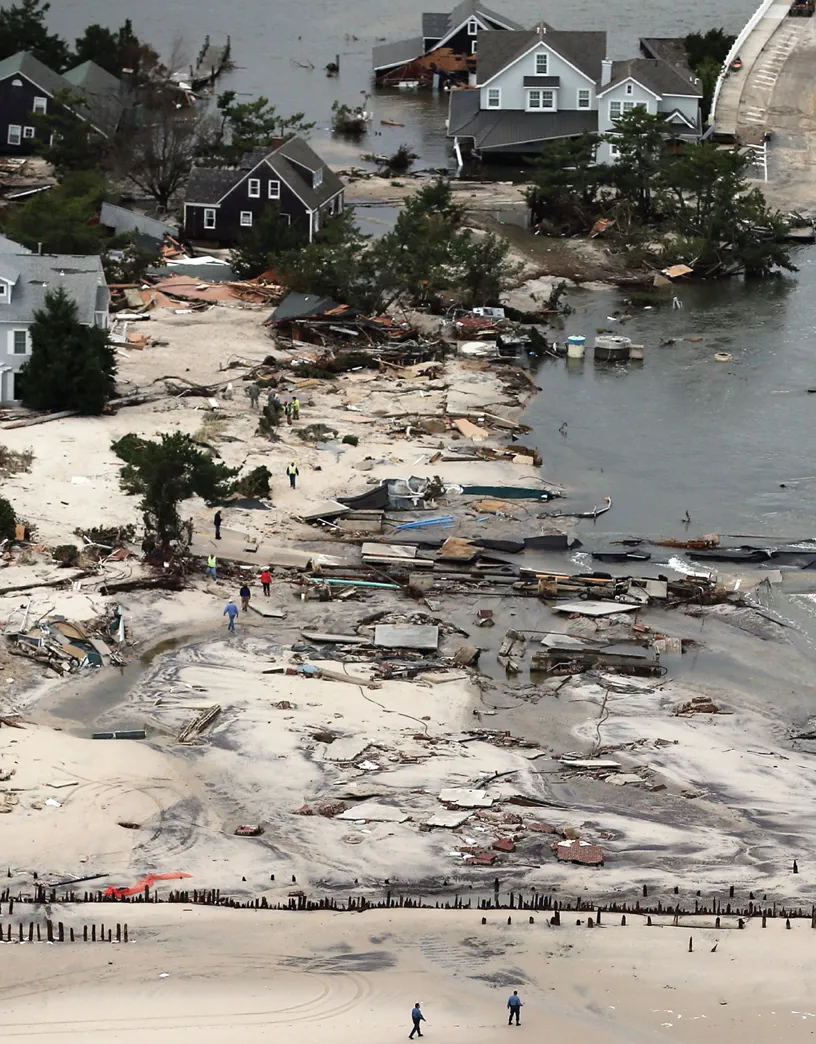
- 456 pages
- English
- ePUB (mobile friendly)
- Available on iOS & Android
About this book
The science of climate change is a complex subject that balances the physical record and scientific fact with politics, policy, and ethics - and is of particular importance to the geosciences. This thoughtfully crafted new text and accompanying media encourage non-science majors to practice critical thinking, analysis, and discourse about climate change themes. Taking a cross-disciplinary approach, acclaimed educator and researcher, David Kitchen, examines not only the physical science, but the social, economic, political, energy, and environmental issues surrounding climate change. His goal: to turn knowledge into action, equipping students with the knowledge and critical skills to make informed decisions, separate facts from fiction, and participate in the public debate.
Frequently asked questions
- Essential is ideal for learners and professionals who enjoy exploring a wide range of subjects. Access the Essential Library with 800,000+ trusted titles and best-sellers across business, personal growth, and the humanities. Includes unlimited reading time and Standard Read Aloud voice.
- Complete: Perfect for advanced learners and researchers needing full, unrestricted access. Unlock 1.4M+ books across hundreds of subjects, including academic and specialized titles. The Complete Plan also includes advanced features like Premium Read Aloud and Research Assistant.
Please note we cannot support devices running on iOS 13 and Android 7 or earlier. Learn more about using the app.
Information
PART 1
THE EVIDENCE: IS THIS NORMAL?


Climate records are being set across the world as heat waves, droughts, floods, snowstorms, tornados, and hurricanes impact the lives of millions of people. There are now clear signs of changing climate on every continent across the globe. As the human and financial costs of extreme weather rise we must understand why global climate is changing and work hard to mitigate its worst impacts. Geological evidence has uncovered a record of continuous and natural climate change, but the extreme weather we observe today is different because none of the usual forces that drive climate change appear to be responsible. Recent climate change appears to be the consequence of a precipitous increase in the emission of heat-trapping greenhouse gases from deforestation, industry and agriculture. Levels of carbon dioxide in the atmosphere have risen by 40% since preindustrial times, and are now higher than at any time during the previous 800,000 years. Computer models project that a level of emissions this high will accelerate climate change until we reduce emissions from all sources. Climate change is a global problem that requires a global solution. Chapter 1 introduces important concepts about weather, climate, and climate change and chapter 2 presents physical evidence that regional climate is changing rapidly across the globe.

CHAPTER 1
“So, What’s Up with the Weather?”
Weather and Climate
Is the Climate Changing?
How Stable Is the Cl...
Table of contents
- Cover Page
- Half Title Page
- Title Page
- Copyright Page
- Dedication
- Brief contents
- Contents
- Preface
- About The Author
- Part 1 The Evidence: Is This Normal?
- Part 2 Follow the Energy: Atmosphere, Oceans, and Climate
- Part 3 Deep Time: A Long History of Natural Climate Change
- Part 4 Impacts of Climate Change: From Polar Bears to Politics
- Part 5 Global Solutions: Managing the Crisis
- Appendix A Climate Change and the Scientific Method
- Appendix B A Quick Science Primer
- Appendix C Online Resources
- Appendix D The Köppen Climate Classification System
- Appendix E Weather Extremes
- Appendix F Common Conversions
- Glossary
- credits
- Index